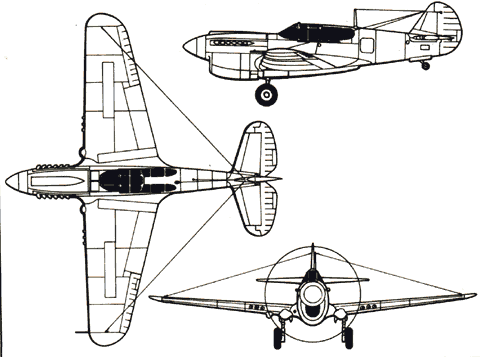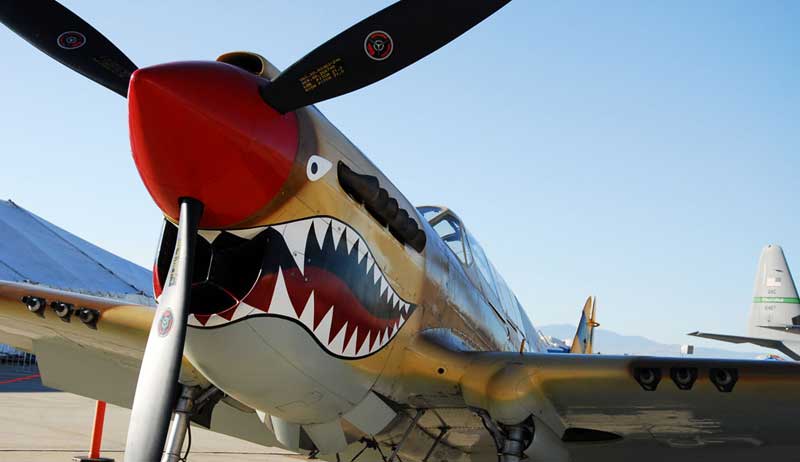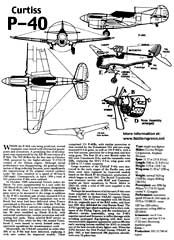
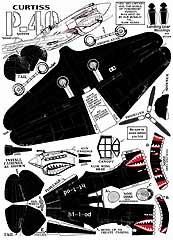
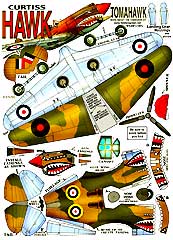
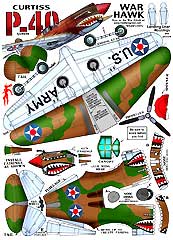
Curtiss-P40-Warhawk - $$7.50
The Curtiss Kittyhawk P-40 was an American single-engine, single-seat, all-metal fighter and ground attack aircraft that first flew in 1938. It was used by the air forces of 28 nations, including those of most Allied powers during World War II, and remained in front line service until the end of the war. This was the first fighter plane given to the brave Tuskegee Airman in WWII 1/12-25 google
P-40 Tigershark-AVG-Tomahawk
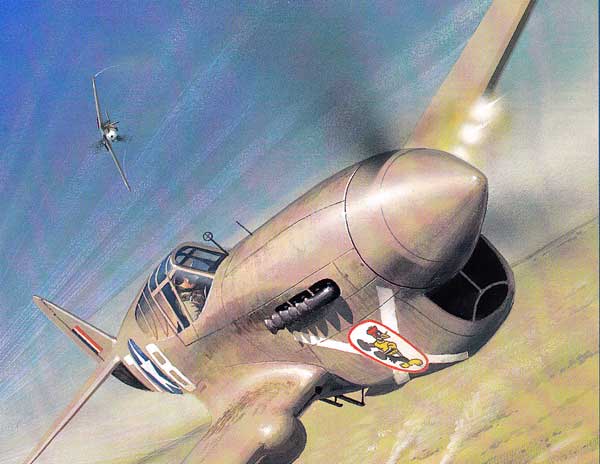
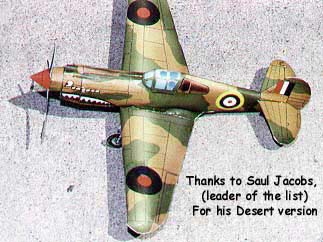 This was the earliest serious fighter in WWII and did it's job until better, more powerful fighters came off the assembly lines. It was known as a safe and secure aircraft being able to fly pilots back home after being shot up in action. The shark teeth graphics are the big feature on this plane and, with just a bit of care, it makes up into a great model.
This was the earliest serious fighter in WWII and did it's job until better, more powerful fighters came off the assembly lines. It was known as a safe and secure aircraft being able to fly pilots back home after being shot up in action. The shark teeth graphics are the big feature on this plane and, with just a bit of care, it makes up into a great model.
The P-40, though not an extremely important fighter, flew on all fronts during the war and was particularly outstanding in the Pacific. The lack of performance of this racy looking fighter was made up by the ruggedness which made it possible for many badly damaged aircraft to return safely to home base.
P-40 WarHawk
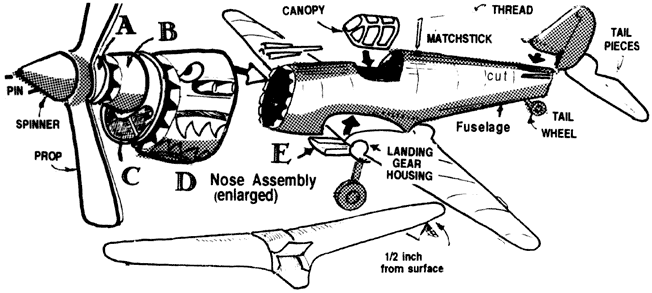
In October 1939 substantial French orders for Hawk 75s were supplemented by a new order for 230 Hawk 8lAs (the Curtiss Company designation for the P-40). Four 7.5-mm (0.295-in) machine guns were to be mounted in the wings in addition to the P-40's standard pair of nose-mounted 0.5-in (12.7-mm) weapons. French equipment was to be fitted, but none had been delivered when France capitulated to Germany in 1940. Like the P-40, the French Hawk 81A-l carried no combat protection, and when the order was taken over by Britain the last 90 were modified as Hawk 81A-2s, with armored windscreens, cockpit protection and self sealing fuel tanks. These entered RAF service as Tomahawk hAs, while the first 140, named Tomahawk I, were issued to newly formed army cooperation squadrons for reconnaissance work.
|
The P-40, though not an extremely important fighter, flew on all fronts during the war and was particularly outstanding in the Pacific. The lack of performance of this racy looking fighter was made up by the ruggedness which made it possible for many badly damaged aircraft to return safely to home base. The fighter was famous in China even before the U.S. entered the war. The American Volunteer Group (AVG) of pilots called the "flying Tigers" led by General Claire Chennault in 1941-42, won 286 victories against 26 losses with the P-40. They were the first to paint their P-40s with the well recognized shark's teeth emblem. When production ended in 1944, a total of 13,733 were built. It was exceeded in numbers only by the P-47 Thunderbolt and the P-51 Mustang. |
Construction Tips! This model is great with the landing gear retracted. The landing gear housing is a bit of a bother but well worth the effort to include it on your model. The wing fairing's need a good bending outward before installing the wing to the fuselage. The enlarged nose section explains the sequence and positioning of parts well. Take your time to understand it.
|
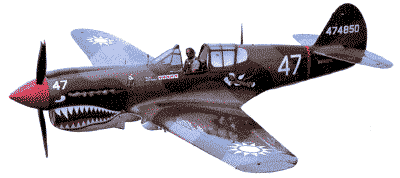
Large numbers of the USAAF P-40s were destroyed in the early stages of the Pacific war, and these were soon replaced by improved models based on the Hawk 87 development, production of which began in mid 1941. The British Tomahawks saw extensive service with RAF and Commonwealth air force squadrons in North Africa in 1941-42, while a total of 195 were supplied to the USSR in 1941.
Perhaps the most famous of all the early P-40s were those supplied to the American Volunteer Group, formed in 1941 by former USAAC captain Claire Chennault. The AVG was supplied with 100 Hawk 81A-2s, originally part of the RAF order, and from late 1941 they defended the vital Burma Road. The AVG's garish tiger-shark markings led to their nickname of the Flying Tigers, and the combination of effective tactics (essentially, using the P-40's superior speed and firepower to inflict damage while avoiding prolonged dog-fighting with their more maneuverable Japanese opponents) and an efficient early warning system enabled the AVG to compile one of the best records of any fighter unit. When the AVG became the 23rd Pursuit Group, USAAF, in July 1942, it had destroyed 286 Japanese aircraft, with only 23 pilots lost.
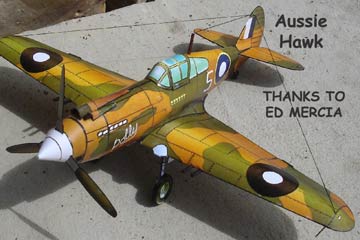
Last of the famous Hawk line, the Curtiss P-40 Warhawk has always boon something of an enigma. By no stretch of the imagination could it be numbered among the great higher aircraft of World War II. Yet with the exceptions of the Republic P-47 and North American P-51, it was the most extensively built US fighter, with 15000 delivered before production ended in December 1944.
Evolution towards the aircraft Which the company designated the Model 81 began in 1937, When the Model 75 prototype's airframe was modified to accept a 1,150-hp Allison V-1710-11 inline. In this form the Model 751 became the first American fighter capable of a speed exceeding 300 mph. The Model 751 Was evaluated by the USAAC as the XP47 despite engine and supercharger difficulties, the potential of the design was clear, and the service ordered 13 of the YP-37 service test model with the improved V-1710-21 engine and slightly longer fuselage. The new 8-2 supercharger was also fitted, but all YP-37s continued to suffer problems with the powerplant installation.
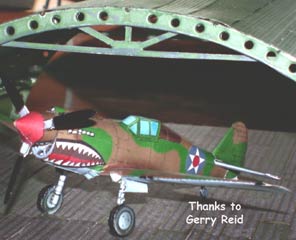
A little later the tenth P-36A Was redesigned by a 1,160-hp Allison V-1710-19 engine, instead of the 1,050-hp Pratt & Whitney R-1830-13 radial which was standard. In other respects it varied little from the P-36A When it Was flown for the first time on 14 October1938. In May 1939 this Model 75P, by then designated XP-40, was flown in competition against other pursuit prototypes and was selected for production as most closely meeting US Army Air Corps requirements. A total of 524 P-40 production aircraft (Model 811 was ordered on 27 April 1939, this then representing the largest single order for fighters to originate from the US Army.
Just over a year later, in May 1940, the first P-40s began to come off the production line, the initial three being used for service trials. These differed from the initial XP-40, With a less powerful supercharged Allison V-1710-33 engine installed and two 7,62-mm (0.3-in) machine-guns in the wings to supplement the two 12.7-mm (0.5-in) machine guns mounted in the fuselage nose. By September 1940 a total of 200 of these aircraft had been delivered to the USAAC.
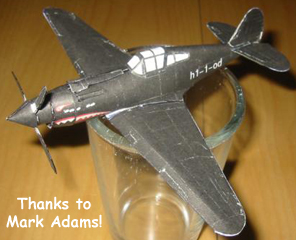
Before that, in April 1940, production priority had been accorded to delivery of 185 generally similar Hawk 81-Al fighters ordered by France. None, hoWever, left the assembly line before that nation's collapse and, instead, these aircraft were diverted to the UK Where they were designated Tomahawk Mk I. Deliveries to England and to Takoradi in West Africa, began in late 1940, but the Tomahawk was unsuited for operational employment in Europe and the majority were relegated to training duties.
Some American P-40s were modified in 1941 to serve in a reconnaissance role, under the designation RP-40, but Curtiss had already begun redesign of the Hawk 81-A in an attempt to improve its performance and effectiveness. The changes included installation of the 1,150-hp Allison V-1710-39, which could maintain this power output to an altitude of 11,700 ft, and the addition of armour, provision of four 12,7-mm (0.5-in) wing-mounted machine-guns, and an under fuselage hard point for the carriage of a 500-lb bomb or 50-US gal fuel drop tank.
Specifications
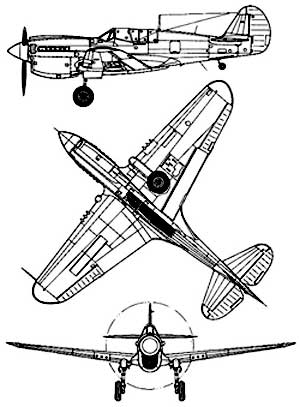 |
Length: 31.67 ft |
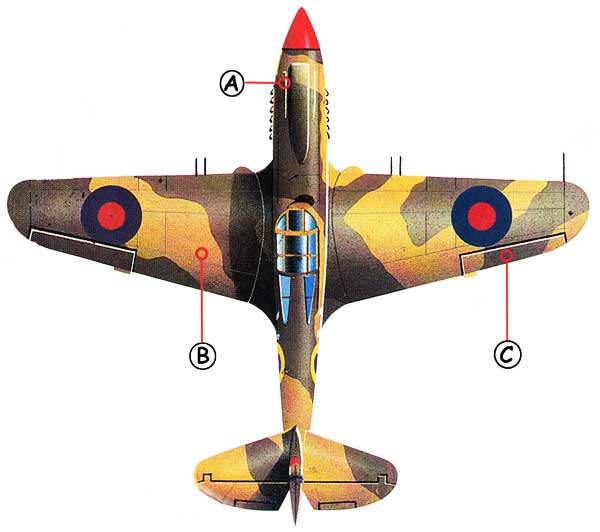 |
||
| A: Early P-40s had a pair of .50 caliber machine guns mounted on the nose but these were often deleted in RAF a aircraft. | B: RAF Desert Air Force P-40s all wore a two-tone brown camouflage scheme. | C: The only parts of the P-40 that were fabric-covered were the control surfaces. This was to save weight and make flying easier. |
 |
||
| A: The "shark mouth" was one of the most characteristic of all Warhawk markings. No. 112 Squadron aircraft was the first to wear it. | B: The canopy was later improved to give better visibility. The front windscreen was bulletproof, and the cockpit was armored. | C: The Allison V-1710 engine was fitted with a supercharger. The cowling was later changed, with an enlarged air scoop. |
| D: Wing armament was four Browning 7.7-mm guns. This was later changed to six .50 caliber machine guns, with 235 rounds per gun. | E: The fuselage hardpoint could carry a single 500 lb. bomb or a 50-gallon fuel tank. | F: The fuselage was of modern construction, with all alloy framework covered by an "Alclad" skin. Additional fuel was contained in a fuselage tank. |
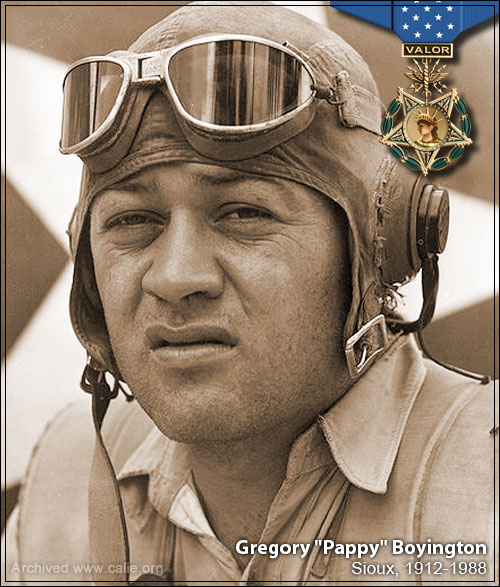
Pappy Boyington
Pappy was a P-40 Warhawk combat pilot and flight leader for the Flying Tigers before the beginning of World War II with the Marine Corps. He took his first flight when he was six years old with Clyde Pangborn. He graduated in 1934 with a B.S. in aeronautical engineering and then worked as a draftsman and engineer for Boeing.
He also flew the Vought F4U Corsair and became Commanding Officer of Marine Fighter Squadron 214, aka the "Black Sheep Squadron" and tied Eddie Rickenbacker's record of 26 enemy planes destroyed before being shot down himself. He then spent 20 months in Japanese prison camps after being picked up by a Japanese submarine.
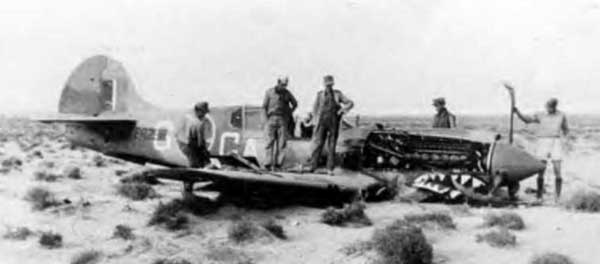
WHOOPS !!



